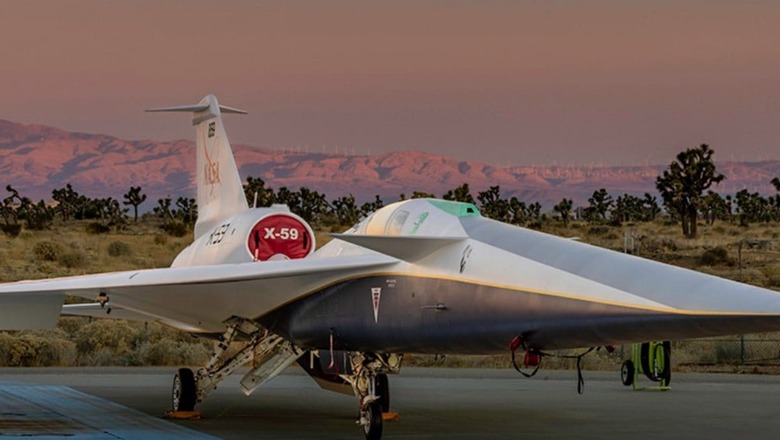
views
Nasa and US defence company Lockheed Martin unveiled the X-59 supersonic aircraft after six years of development. The ‘quiet’ supersonic aircraft is an upgrade on the supersonic aircrafts of the past. The X-59 can fly at 1.4 times the speed of sound or around 1,480 km/h. Supersonic flights are flights that travel at speeds faster than the speed of sound.
This is not a render.This is the X-59, a single-seat X-plane aiming to reduce the sound of the sonic boom to a mere thump. It opens the possibility for commercial supersonic flights over land, which has been prohibited since 1973. Be on the lookout for first flight! pic.twitter.com/7MZQZoyVjG
— Lockheed Martin (@LockheedMartin) January 12, 2024
“Today supersonic flight brings a thunderous supersonic boom. Those of us who live in the area are familiar with this sound,” Pam Melroy, NASA’s deputy administrator, said during the launch event, according to a report by Euronews.
“But what that means is that it’s restricted across populated areas, with good reason. And the X-59 is going to break that barrier. Meticulously engineered, it produces a gentle thump. A mere whisper compared to the disruptive booms of the past,” Melroy further added.
The X-59 is 30 metres long and 9 metres wide and has a thin, tapered nose which accounts for almost one-third of its length. The space agency said the pointy nose will help the aircraft break the shockwaves that result during a sonic boom.
A sonic boom is a sound similar to an explosion or a thunderclap to the human ear and occurs when an object travels through air faster than the speed of sound.
Melroy also said that the X-59 will change the way people have travelled. The X-59 is the product of the Quest mission which was launched in 2018 with an aim to build supersonic aircraft that generates less noise than a conventional supersonic aircraft, like the now-retired Concorde.
“In just a few short years we’ve gone from an ambitious concept to reality. NASA’s X-59 will help change the way we travel, bringing us closer together in much less time. This breakthrough really redefines the feasibility of commercial supersonic travel over land,” the Nasa deputy administrator said.
The US and several other nations banned supersonic aircraft because of the loud noise. The project involving test flights using the X-59 will yield data to help US lawmakers consider the ban on supersonic aircrafts. Nasa said that if granted permission then these aircraft would help drastically reduce travel time, cutting flight time from New York to Los Angeles in half.
The X-59 is set to take off for the first time later this year and Nasa will fly the aircraft over several US cities and then survey residents on how they perceive the noise by 2027.


















Comments
0 comment